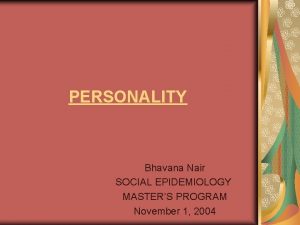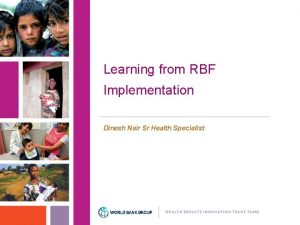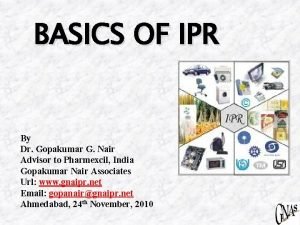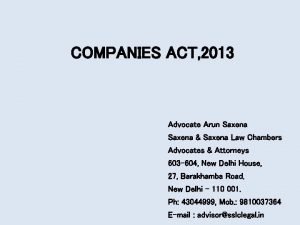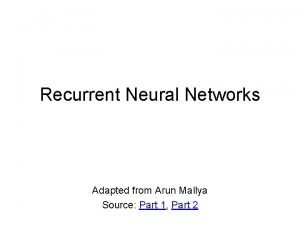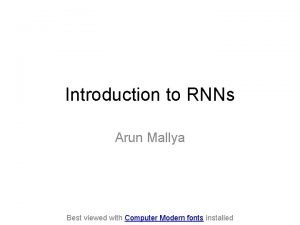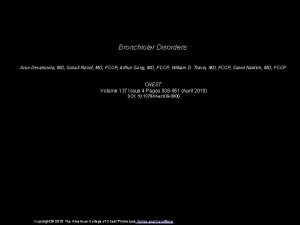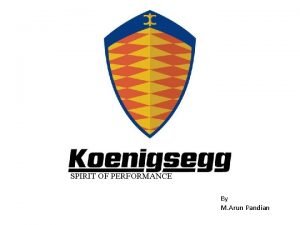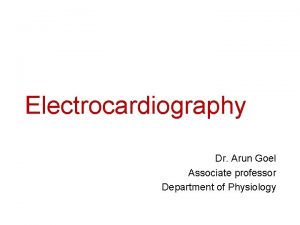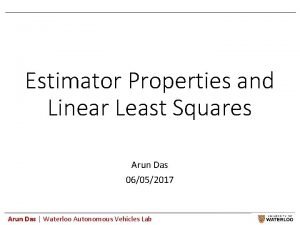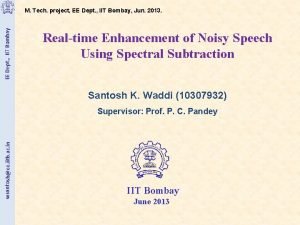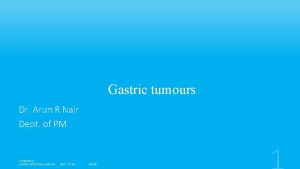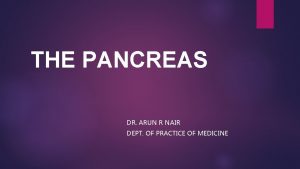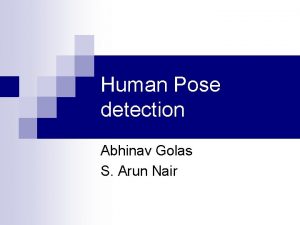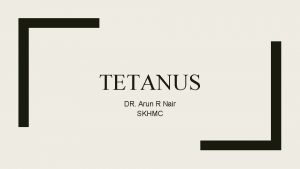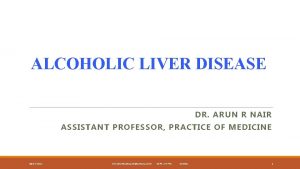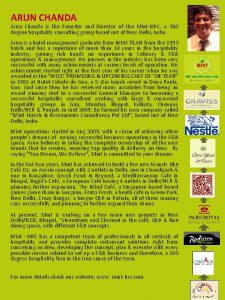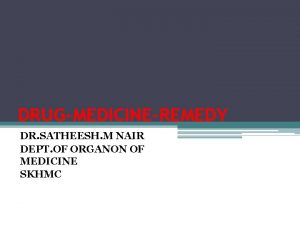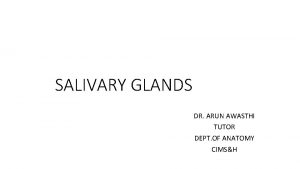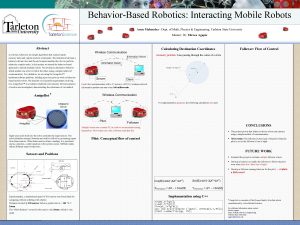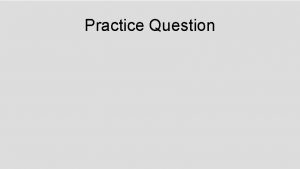DR ARUN R NAIR Dept Of PRACTICE OF































































- Slides: 63

DR. ARUN R NAIR Dept. Of PRACTICE OF MEDICINE.

Rectus abdominis Muscle. Xiphoid process Costal margin Midline, overlying linea alba Umbilicus Iliac crest Inguinal ligament Anterior superior iliac spine Pubic tubercle Symphysis pubis DR. ARUN NAIR SKHMC Dept PM 8/22/2016 2

DR. ARUN NAIR SKHMC Dept PM 8/22/2016 3

DR. ARUN NAIR SKHMC Dept PM 8/22/2016 4

DR. ARUN NAIR SKHMC Dept PM 8/22/2016 5

GENERAL • Anorexia • Weight loss • Pain - (Constant, colicky, local, generalized) • Abdominal -distension DR. ARUN NAIR SKHMC Dept PM 8/22/2016 6

v XEROSTOMIA (Dry mouth) v WATER BRASH (Sudden appearance of excessive saliva in the mouth) v PAINFUL LIPS, TONGUE AND MOUTH v DYSGEUSIA (Altered taste sensation) v DYSPHAGIA (Difficulty swallowing ) v GLOBUS (Sensation of a lump in the throat) v ODYNOPHAGIA (Pain on swallowing ) v HEARTBURN (Burning retrosternal discomfort radiating upward) v FLATULENCE (Belching ) v DYSPEPSIA (Indigestion ) v EARLY SATIETY (Premature fullness on eating) v NAUSEA v HAEMATEMESIS (Vomiting fresh or altered blood) v HICCUPS l a in t r s e nte p Up stroi ga 8/22/2016 7

LOWER GASTROINTESTINAL • WIND (Excessive/offensive flatus, or bloating/distension) Altered bowel habit: • DIARRHOEA (Abnormally soft stools and/or frequent defecation) • CONSTIPATION (Abnormally firm stools and/or infrequent defecation) • STEATORRHOEA (Fatty stools, pale, greasy, difficult to flush away) • HAEMATOCHEZIA (Rectal bleeding) • MELAENA (Black, tarry stools) DR. ARUN NAIR SKHMC Dept PM HEPATOBILIARY Jaundice (icterus) Itch (pruritus) 8/22/2016 8

o g s t e L. . o t

§ Make sure that the patient is comfortable, then “LOOK, LISTEN, THEN FEEL”. Ø INSPECTION Ø AUSCULTATION Ø PERCUSSION Ø PALPATION DR. ARUN NAIR SKHMC Dept PM 8/22/2016 10

§ The patient should have an empty bladder. § The patient should be lying supine on the exam table and appropriately draped. § The examination room must be quiet to perform adequate auscultation and percussion. § Watch the patient's face for signs of discomfort while entering the room onwards & during the examination. DR. ARUN NAIR SKHMC Dept PM 8/22/2016 11

§The patient should be flat in the bed, with one pillow and legs/arms straight. “Make sure that we wash our hands in the presence of the patient before beginning the examination. This is a subtle yet much appreciated gesture of concern for the patient’s welfare. ” DR. ARUN NAIR SKHMC Dept PM 8/22/2016 12

§The patient should be exposed from their nipples to the symphysis pubis. §The inguinal regions and external genitalia are also part of the full examination, but can be exposed at the appropriate time. DR. ARUN NAIR SKHMC Dept PM 8/22/2016 13

. . o t o Lets g

A personal system for performing a physical examination • Handshake and introduction • Note general appearances while talking: • does the patient look well? • any immediate and obvious clues, e. g. obesity, plethora, breathlessness • complexion • Hands and radial pulse • Face • Mouth • Neck • Thorax: • breasts • heart • lungs • Abdomen • Lower limbs: • oedema • circulation • Cranial nerves, • Blood pressure DR. ARUN NAIR SKHMC Dept PM • Height and weight 8/22/2016 15

Information from a handshake Cold, sweaty hands Abnormal facial expressions Anxiety Poverty of expression Parkinsonism Startled expression Hyperthyroidism Depression Cold, dry hands Raynaud's phenomenon Hot, sweaty hands Hyperthyroidism Large, fleshy, sweaty hands Acromegaly Apathy, with poverty of expression and poor eye contact Dry, coarse skin Regular water exposure Manual occupation Hypothyroidism Apathy, with pale and puffy Hypothyroidism skin Delayed relaxation of grip Myotonic dystrophy Lugubrious expression with Myotonic dystrophy bilateral ptosis Agitated expression Deformed hands/fingers Dupuytren's contracture Rheumatoid arthritis DR. ARUN NAIR SKHMC Dept PM Anxiety Hyperthyroidism Hypomania 8/22/2016 16


INSPECTION Starting from your usual standing position at the right side of the bed, inspect the abdomen. look at the contour of the abdomen and watch for peristalsis, it is helpful to sit or bend down so that we can view the abdomen tangentially. DR. ARUN NAIR SKHMC Dept PM 8/22/2016 18

Normal appearance • The abdomen is normally flat or slightly scaphoid and symmetrical. • At rest, respiration is principally diaphragmatic and the abdominal wall moves out with inspiration. • The umbilicus is usually inverted. • The liver edge may be felt below the right costal margin. • The aorta may be palpable as a pulsatile swelling above the umbilicus. • The lower pole of the right kidney may be palpable in the right flank. • The sigmoid colon may be palpable in the left iliac fossa, particularly if loaded with faeces. • A full bladder is palpable as a mass in the suprapubic region arising out of the pelvis and dull to percussion. DR. ARUN NAIR SKHMC Dept PM 8/22/2016 19

SKIN. SCARS AND STOMAS. Note any surgical scars and clarify what they were for. They should be described in a standardized manner: § An appendicectomy scar lies diagonally in the right iliac fossa. Scars from hernia repairs are also diagonal but lower in either inguinal region. § A horizontal suprapubic scar, the Pfannenstiel incision, is used for gynaecological surgery. § A right subcostal scar usually signifies an open cholecystectomy while a bilateral subcostal scar with a vertical extension to the ziphisternum - known as a 'Mercedes-Benz' scar for obvious reasons - is the result of liver surgery. § A small infraumbilical incision is usually the result of previous laparoscopy. § Puncture scars from the ports used for laparoscopic surgery may be visible, e. g. in the right DR. ARUN NAIR SKHMC Dept PM hypochondrium for laparoscopic cholecystectomy. 8/22/2016 20

v VISIBLE VEINS. Abnormally prominent veins on the abdominal wall signify portal hypertension or vena caval obstruction. In portal hypertension this results from the recanalization of the umbilical vein along the falciform ligament. v DISTENSION/SWELLING. The abdomen is distended and if so whether the distension is generalized or caused by a localized mass. In obesity the umbilicus is usually sunken, whereas in the other conditions it is flat or even projecting. Localized swelling, e. g. due to massive enlargement of liver or spleen, is best seen as asymmetry when you look at the patient from the foot of the bed. DR. ARUN NAIR SKHMC Dept PM 8/22/2016 21

DR. ARUN NAIR SKHMC Dept PM 8/22/2016 22

Listen to the abdomen before performing percussion or palpation, since these maneuvers may alter the frequency of bowel sounds.

Place the diaphragm of stethoscope gently on the abdomen. Listen for bowel sounds and note their frequency and character. Normal sounds consist of clicks and gurgles, occurring at an estimated frequency of 5 to 34 per minute. Occasionally you may hear borborygmi—long prolonged gurgles of hyperperistalsis—the familiar “stomach growling. ” Because bowel sounds are widely transmitted through the abdomen, listening in one spot, such as the right lower quadrant, is usually sufficient. Auscultation may also reveal bruits, vascular sounds resembling heart murmurs, over the aorta or other arteries in the abdomen, which suggest vascular occlusive disease. You must listen for up to 2 minutes before concluding that they are absent. Absence of bowel sounds implies paralytic ileus or peritonitis. DR. ARUN NAIR SKHMC Dept PM 8/22/2016 24

§ In intestinal obstruction, bowel sounds occur at increased frequency and have a high-pitched tinkling quality. § Listen above the umbilicus over the aorta for bruits which indicate turbulent flow from atheroma or an aneurysm. § place the stethoscope 2 -3 cm above and lateral to the umbilicus to listen for renal artery bruits as in renal artery stenosis. DR. ARUN NAIR SKHMC Dept PM Aorta Renal artery Iliac artery Femoral artery 8/22/2016 25

• The liver for bruits which occur in hepatoma or acute alcoholic hepatitis. a friction rub in perihepatitis. • Very occasionally you may hear a venous hum in the upper abdomen over a caput medusa. • A succussion splash sounds like shaking a half-filled water bottle. Shake the abdomen by lifting the patient with both hands under the pelvis. Explain first what you are going to do. An audible splash more than 4 hours after the patient has eaten or drunk anything, indicates delayed gastric emptying, e. g. pyloric DR. ARUN NAIR SKHMC Dept PM 8/22/2016 26


PERCUSSION Percuss the abdomen lightly in all four quadrants to assess the distribution of tympany and dullness. Tympany usually predominates because of gas in the gastrointestinal tract, but scattered areas of dullness due to fluid and feces are also typical. Any large dull areas that might indicate an underlying mass or enlarged organ. This observation will guide your palpation. On each side of a protuberant abdomen, note where abdominal tympany changes to the dullness of solid posterior structures. Briefly percuss the lower anterior chest, between lungs above and costal margins below. On the right, usually find the dullness of liver; on the left, the tympany that overlies the gastric air bubble and the splenic flexure of the colon. DR. ARUN NAIR SKHMC Dept PM 8/22/2016 28

Measure the vertical span of liver dullness in the right midclavicular line. Starting at a level below the umbilicus (in an area of tympany, not dullness), lightly percuss upward toward the liver. Ascertain the lower border of liver dullness in the midclavicular line. Next, identify the upper border of liver dullness in the midclavicular line. Lightly percuss from lung resonance down toward liver dullness. 4 – 8 cm in midsternal line. 6 – 12 cm in right midclavicular line DR. ARUN NAIR SKHMC Dept PM 8/22/2016 29

ØThe span of liver dullness is increased when the liver is enlarged. ØThe span of liver dullness is decreased when the liver is small, or when free air is present below the diaphragm, as from a perforated hollow viscus. ØDullness of a right pleural effusion or consolidated lung, if adjacent to liver dullness, may falsely increase the estimate of liver size. ØGas in the colon may produce tympany in the right upper quadrant, obscure liver dullness, and falsely decrease the estimate of liver size. DR. ARUN NAIR SKHMC Dept PM 8/22/2016 30

When a spleen enlarges, it expands anteriorly, downward, and medially, often replacing the tympany of stomach and colon with the dullness of a solid organ. Percussion cannot confirm splenic enlargement but can raise suspicions of it. Two techniques may help you to detect splenomegaly, an enlarged spleen: Percuss the left lower anterior chest wall between lung resonance above and the costal margin (an area termed Traube’s space). This is variable, but if tympany is prominent, especially laterally, splenomegaly is not likely. The dullness of a normal spleen is usually hidden within the dullness of other posterior tissues. DR. ARUN NAIR SKHMC Dept PM 8/22/2016 31

Check for a splenic percussion sign. Percuss the lowest interspace in the left anterior axillary line, as shown below. This area is usually tympanitic. Then ask the patient to take a deep breath, and percuss again. When spleen size is normal, the percussion note usually remains tympanitic. If either or both of these tests is positive, pay extra attention to palpating the spleen. A change in percussion note from tympany to dullness on inspiration suggests splenic enlargement. This is a positive splenic percussion sign. DR. ARUN NAIR SKHMC Dept PM 8/22/2016 32

SHIFTING DULLNESS This test is to demonstrate the presence of ascites. With the patient supine, percuss from the midline out to the flanks. Note any change from resonant to dull. 1. There are two methods : Keep our finger on the site of dullness in the flank and ask the patient to turn onto the opposite side. Pause for at least 10 seconds to allow any ascites to gravitate; then percuss again and if that area is now resonant, we have demonstrated shifting dullness as the ascitic fluid became dependent. 2. Mark the point at which the percussion note changes from resonant to dull with a pen on a line parallel to the flank. Ask the patient to turn to the same side and repeat the manoeuvre: if the line has moved 'up' the abdomen towards the midline, we have demonstrated shifting dullness. DR. ARUN NAIR SKHMC Dept PM 8/22/2016 33

PUDDLE SIGN Patient is made to adapt knee elbow position, in which periumbilical region become more dependent. Fluid collection in this can be demonstrated by dullness on percussion. It can be demonstrated if fluid in peritoneal cavity. DR. ARUN NAIR SKHMC Dept PM 8/22/2016 34

FLUID THRILL-Test for a fluid wave. Place the palm of our left hand flat against the left side of the abdomen, flick a finger of your right hand against the right side of the abdomen. If we feel a ripple against our left hand, ask the patient (or an assistant) to place the edge of a hand on the midline of the abdomen. This prevents transmission of the impulse via the skin. If we still feel a ripple against our left hand this is a fluid thrill. This sign is only present when ascites is obvious. we find central dullness and lateral resonance in a woman, suspect a giant ovarian cyst. DR. ARUN NAIR SKHMC Dept PM 8/22/2016 35


Examination Sequence → Ensure that your hands are warm. If the patient is in a low bed, sit on, or kneel beside, the bed on the patient's right side. → Ask the patient to place his arms alongside his body to help relax the abdominal wall. Placing a pillow under the patient's knees may also help by allowing flexion of the hips. → Ask the patient to show you where he feels pain before you start, and to report any tenderness as you examine him. → Begin with gentle superficial examination of the whole abdomen. If the patient has abdominal pain, start away from the site of maximal pain and move in a systematic manner through the nine regions of the abdomen. → Use your right hand, keeping it flat and in contact with the abdominal wall, and avoid using your finger tips. As you palpate, watch the patient's face for any sign of discomfort. → Palpate lightly in each region in turn, then repeat this palpating deeply. → Test muscle tone by light dipping movements with your fingers. DR. ARUN NAIR SKHMC Dept PM 8/22/2016 37

LIGHT PALPATION. v Feeling the abdomen gently is especially helpful in identifying abdominal tenderness, muscular resistance, and some superficial organs and masses. It also serves to reassure and relax the patient. v Keeping your hand forearm on a horizontal plane, with fingers together and flat on the abdominal surface, palpate the abdomen with a light, gentle, dipping motion. v When moving your hand from place to place, raise it just off the skin. v Moving smoothly, feel in all quadrants. v Identify any superficial organs or masses and any area of tenderness or increased v Resistance to your hand. If resistance is present, try to distinguish voluntary v Guarding from involuntary muscular spasm. DR. ARUN NAIR SKHMC Dept PM 8/22/2016 38

DEEP PALPATION. using the palmar surfaces of your fingers, feel in all four quadrants. v Identify any masses and note their location, size, shape, consistency, tenderness, pulsations, and any mobility with respiration or with the examining hand. DR. ARUN NAIR SKHMC Dept PM 8/22/2016 39

DR. ARUN NAIR SKHMC Dept PM 8/22/2016 40

ASSESSMENT FOR PERITONEAL INFLAMMATION. Localize the pain as accurately as possible. First, even before palpation, ask the patient to cough and determine where the cough produced pain. Then, palpate gently with one finger to map the tender area. Pain produced by light percussion has similar localizing value. Look for rebound tenderness. Press your fingers in firmly and slowly, and then quickly withdraw them. Watch and listen to the patient for signs of pain. DR. ARUN NAIR SKHMC Dept PM 8/22/2016 41

Abnormal findings TENDERNESS. • Apparent tenderness in several areas with minimal pressure may be due to generalized peritonitis, but is often due to patient anxiety. • Severe pain with no tenderness on deep palpation, or where the tenderness disappears when the patient is distracted, suggests non-organic pathology. • Palpation which elicits pain may cause the patient to voluntarily contract the overlying abdominal muscles (voluntary guarding). • If the pain is due to inflammation, pressure of the parietal peritoneum Into the inflamed area results in a reflex contraction of the overlying muscles (involuntary guarding). • If the whole peritoneal cavity is inflamed there will be generalized peritonitis and the muscles of the anterior abdominal wall will be held rigid (board-like rigidity). The anterior abdominal wall does not move with respiration and breathing becomes increasingly thoracic. DR. ARUN NAIR SKHMC Dept PM 8/22/2016 42

• 'Rebound' tenderness is a sensitive sign of intra-abdominal disease but not a reliable indicator of peritoneal irritation. • The site of the tenderness is important, e. g. tenderness in the epigastrium suggests peptic ulcer; in the right hypochondrium, cholecystitis; in the right iliac fossa, appendicitis. • PALPABLE MASS. feel a mass decide if it is due to enlargement of an abdominal organ, or a separate mass. If the mass or lump seems superficial it may be within the anterior abdominal wall rather than the abdominal cavity. Ask the patient to tense the abdominal muscles by lifting the head; an abdominal wall mass will still be palpable, whereas a deep mass will not DR. ARUN NAIR SKHMC Dept PM 8/22/2016 43

PALPATION OF LIVER Place left hand behind the patient, parallel to and supporting the right 11 th and 12 th ribs and adjacent soft tissues below. Remind the patient to relax on your hand if necessary. By pressing your left hand forward, the patient’s liver may be felt more easily by your other hand. Place our right hand on the patient’s right abdomen lateral to the rectus muscle, with your fingertips well below the lower border of liver dullness. Ask the patient to take a deep breath. Try to feel the liver edge as it comes down to meet your fingertips. If we feel it, lighten the pressure of our palpating hand slightly so that the liver can slip under your finger pads and we can feel its anterior surface. Note any tenderness. If palpable at all, the edge of a normal liver is soft, sharp, and regular, its surface smooth. The normal liver may be slightly tender. DR. ARUN NAIR SKHMC Dept PM 8/22/2016 44

Con’t. . On inspiration, the liver is palpable about 3 cm below the right costal margin in the midclavicular line. An obstructed, distended gallbladder may form an oval mass below the edge of the liver and merging with it. It is dull to percussion. The “hooking technique” may be helpful, especially when the patient is obese. Stand to the right of the patient’s chest. Place both hands, side by side, on the right abdomen below the border of liver dullness. Press in with our fingers and up toward the costal margin. Ask the patient to take a deep breath. The liver edge shown below is palpable with the fingerpads of both hands. DR. ARUN NAIR SKHMC Dept PM 8/22/2016 45

Con’t. . Assessing Tenderness of a Non-palpable Liver. Place our left hand flat on the lower right rib cage and then gently strike our hand with the ulnar surface of our right fist. Ask the patient to compare the sensation with that produced by a similar strike on the left side. “Tenderness over the liver suggests inflammation, as in hepatitis, or congestion, as in heart failure. ” DR. ARUN NAIR SKHMC Dept PM 8/22/2016 46

PALPATING AN ENLARGED LIVER EXAMINATION SEQUENCE → Start palpating in the right iliac fossa. → Use either the radial border of our right hand, i. e. the outside edge of the forefinger, or the finger pads; in both cases keep our hand flat on the abdomen. → Keep our hand stationary and ask the patient to take a deep breath in. Try to feel the edge of the enlarged liver as it moves downwards on inspiration. → Move our hand progressively further up the abdomen a centimeter or so at a time repeating the request to breathe in until we reach the costal margin or detect the edge. DR. ARUN NAIR SKHMC Dept PM 8/22/2016 47

→ If we feel the liver edge, work out if it is enlarged or displaced downwards as occurs in patients with hyperinflated lungs from emphysema. The liver is dull to percussion whereas the lung is resonant, so locate the upper border of the liver by percussing over the right lateral chest wall. The lower three to four ribs are normally dull to percussion. A reduced area of dullness suggests emphysema, a shrunken liver (as occurs in end-stage cirrhosis), or occasionally interposition of the transverse colon between the liver and the diaphragm. → Measure the distance below the costal margin in centimetres in the midclavicular line. DR. ARUN NAIR SKHMC Dept PM 8/22/2016 48

DR. ARUN NAIR SKHMC Dept PM 8/22/2016 49

PALPATION OF THE SPLEEN With our left hand, reach over and around the patient to support and press forward the lower left rib cage and adjacent soft tissue. With our right hand below the left costal margin, press in toward the spleen. Ask the patient to take a deep breath. Try to feel the tip or edge of the spleen as it comes down to meet our fingertips. Note any tenderness, assess the splenic contour, and measure the distance between the spleen’s lowest point and the left costal margin. In a small percentage of normal adults, the tip of the spleen is palpable. Repeat with the patient lying on the right side with legs somewhat flexed at hips and knees. In this position, gravity may bring the spleen forward and to the right into a palpable location. DR. ARUN NAIR SKHMC Dept PM 8/22/2016 50

PALPATING AN ENLARGED SPLEEN The spleen has to increase in size threefold to be palpable, so a palpable splenic edge always indicates splenomegaly. The spleen enlarges from under the left costal margin down and medially towards the right iliac fossa. If the spleen is significantly enlarged, a characteristic notch may be palpable midway along its leading edge. Examination sequence → Start palpating in the right iliac fossa. If you start in the right hypochondrium, you may already be above the lower border of a massively enlarged liver. → Use either the radial border of your right hand, i. e. the outside edge of the forefinger, or the finger pads; in both cases keep your hand flat on the abdomen. Do not dig in with your finger tips as you may get a false impression of the liver edge. DR. ARUN NAIR SKHMC Dept PM 8/22/2016 51

THE KIDNEYS-PALPATION “kidneys are not usually palpable” Palpation of the Kidney. Place our hand behind the patient just below and parallel to the 12 th rib, with our fingertips just reaching the costo vertebral angle. Lift, trying to displace the kidney anteriorly. Place our opposite hand gently in the upper quadrant, lateral and parallel to the rectus muscle. Ask the patient to take a deep breath. At the peak of inspiration, press our left hand firmly and deeply into the left upper quadrant, just below the costal margin, and try to “capture” (ballotting) the kidney between our two hands. Ask the patient to breathe out and then to stop breathing briefly. Slowly release the pressure of our left hand, feeling at the same time for the kidney to slide back into its expiratory position. DR. ARUN NAIR SKHMC Dept PM 8/22/2016 52

Kidney Tenderness. Note tenderness when examining the abdomen, but also search for it at each costovertebral angle. Pressure from our fingertips may be enough to elicit tenderness, but if not, use fist percussion. Place the ball of one hand in the costovertebral angle and strike it with the ulnar surface of our fist. Use enough force to cause a perceptible but painless jar or thud in a normal person. To save the patient needless exertion, integrate this assessment with our examination of the back. “Pain with pressure or fist percussion suggests pyelonephritis, but may also have a musculoskeletal cause. ” DR. ARUN NAIR SKHMC Dept PM 8/22/2016 53

The Bladder The bladder normally cannot be examined unless it is distended above the symphysis pubis. On palpation, the dome of the distended bladder feels smooth and round. Check for tenderness. Use percussion to check for dullness and to determine how high the bladder rises above the symphysis pubis. “Suprapubic tenderness in bladder infection” DR. ARUN NAIR SKHMC Dept PM 8/22/2016 54

THE AORTA Press firmly deep in the upper abdomen, slightly to the left of the midline, and identify the aortic pulsations. The ease of feeling aortic pulsations varies greatly with the thickness of the abdominal wall and with the anteroposterior diameter of the abdomen. DR. ARUN NAIR SKHMC Dept PM 8/22/2016 55

AN INFLAMED APPENDIX ROVSING’S SIGN. "The left hand is applied over the healthy colon in the left iliac fossa, the right hand applies pressure over it in an antiperistaltic direction; because the ileo-caecal valve is competent, pain is produced in the right iliac fossa with inflammation of the appendix and caecum. Where there is muscular rigidity in the right iliac fossa and therefore accurate palpation is impossible, it will give a clue to the diagnosis - that is, it will differentiate between a lesion of the caecum and the appendix in the right iliac fossa from another lesion“. DR. ARUN NAIR SKHMC Dept PM 8/22/2016 56

Psoas sign The psoas sign is a medical sign that indicates irritation to the iliopsoas group of hip flexors in the abdomen, and consequently indicates that the inflamed appendix is retrocaecal in orientation (as the iliopsoas muscle is retroperitoneal). It is elicited by performing the psoas test by passively extending the thigh of a patient lying on his side with knees extended, or asking the patient to actively flex his thigh at the hip. [1] If abdominal pain results, it is a "positive psoas sign". Obturator sign A clinical finding in a Patient lying on his back with the right hip and knee flexed and rotated internally and externally; pain in the right lower quadrant is due to irritation of the medial internal obturator muscle, and is 'classically' associated with appendicitis, but may also occur in right pelvic abscesses , is a characteristic of infectious arthritis, & may be seen in traumatic hemorrhage DR. ARUN NAIR SKHMC Dept PM 8/22/2016 57

Murphy’s sign. A sharp increase in tenderness with a sudden stop in inspiratory effort constitutes a positive Murphy’s sign of acute cholecystitis. DR. ARUN NAIR SKHMC Dept PM 8/22/2016 58

59 DR. ARUN NAIR SKHMC Dept PM 8/22/2016

ABDOMEN § Normal appearance flat, scaphoid and symmetrical. § Normal findings liver edge may be felt below the right costal margin. § Aorta may be palpable as pulsatile swelling. § Lower pole of the right kidney may be palpable. § Faecal mass may be palpable. § Distended bladder DR. ARUN NAIR SKHMC Dept PM 8/22/2016 60

INSPECTION § Skin striae, bruising or scratch marks. § distended veins superior vena cava, inferior vena cava and, portal hypertension (caput medusae). § Distension of abdomen. Generalised or localised. § Scars and stomas § Movements normal movements- still, silent abdomen in generalised peritonitis. § Epigastric palpation. § Visible peristalsis GOO, distal small bowel obstruction, normal very thin, elderly patients. § Pigmentation of skin -linea nigra -erythema ab igne -- brown mottled pigmentation on the skin of abdominal wall. DR. ARUN NAIR SKHMC Dept PM 8/22/2016 61

Light palpation tenderness rebound tenderness palpable mass Deep palpation enlarged organs, liver, spleen, kidneys, gall bladder. Percussion liver, spleen, shifting dullness fluid thrill. Auscultation bowel sounds, aorta (above umbilicus), renal bruits, liver bruits, rub succussion splash. DR. ARUN NAIR SKHMC Dept PM 8/22/2016 62

 Dyuthi nair
Dyuthi nair Bhavana nair
Bhavana nair Tardokinesis echo
Tardokinesis echo Aakash r nair
Aakash r nair Kareena nair
Kareena nair Environmental effects of tidal energy
Environmental effects of tidal energy Gopakumar nair associates
Gopakumar nair associates Rema nair
Rema nair Dr dinesh nair
Dr dinesh nair Natasha flyer
Natasha flyer Dr bipin nair
Dr bipin nair Who invented nair
Who invented nair Social structure of russia
Social structure of russia Vincent nair
Vincent nair Dr gopakumar nair
Dr gopakumar nair Ajai nair
Ajai nair Arun saxena advocate
Arun saxena advocate Caption generation
Caption generation Arun mallya
Arun mallya Dr suhail raoof
Dr suhail raoof Arun verma bloomberg
Arun verma bloomberg Affordable on arun
Affordable on arun Spirit of performance koenigsegg
Spirit of performance koenigsegg Dr arun shahi
Dr arun shahi Dr arun goel
Dr arun goel Accounting for partnership basic concepts
Accounting for partnership basic concepts Arun zurel
Arun zurel Arun saxena advocate
Arun saxena advocate Arun khan
Arun khan Arun saini md
Arun saini md Arun c murthy
Arun c murthy Arun kaura
Arun kaura Dr arun das
Dr arun das What does papa write to arun about mrs. patton?
What does papa write to arun about mrs. patton? Employee engagement action planning toolkit
Employee engagement action planning toolkit Gome dept
Gome dept Affiliation poster
Affiliation poster Finance dept structure
Finance dept structure Dept ind onegov
Dept ind onegov Pt dept logistik
Pt dept logistik Rowan county dss
Rowan county dss Firefighter interview tips
Firefighter interview tips Liz welch mississippi
Liz welch mississippi Rewley house continuing education library
Rewley house continuing education library Florida dept of agriculture and consumer services
Florida dept of agriculture and consumer services Horizontal
Horizontal Worcester plumbing inspector
Worcester plumbing inspector Albany county dss
Albany county dss Dept of education
Dept of education Nys dept of homeland security
Nys dept of homeland security Oviposition
Oviposition Vaginal dept
Vaginal dept Dept. name of organization (of affiliation)
Dept. name of organization (of affiliation) Dept nmr spectroscopy
Dept nmr spectroscopy Nebraska dept of agriculture
Nebraska dept of agriculture Dept a
Dept a Gome dept
Gome dept Dept. name of organization
Dept. name of organization Affiliate disclodures
Affiliate disclodures Dept of education
Dept of education Gome dept
Gome dept Employment first ohio
Employment first ohio Florida dept of agriculture and consumer services
Florida dept of agriculture and consumer services Iit
Iit

